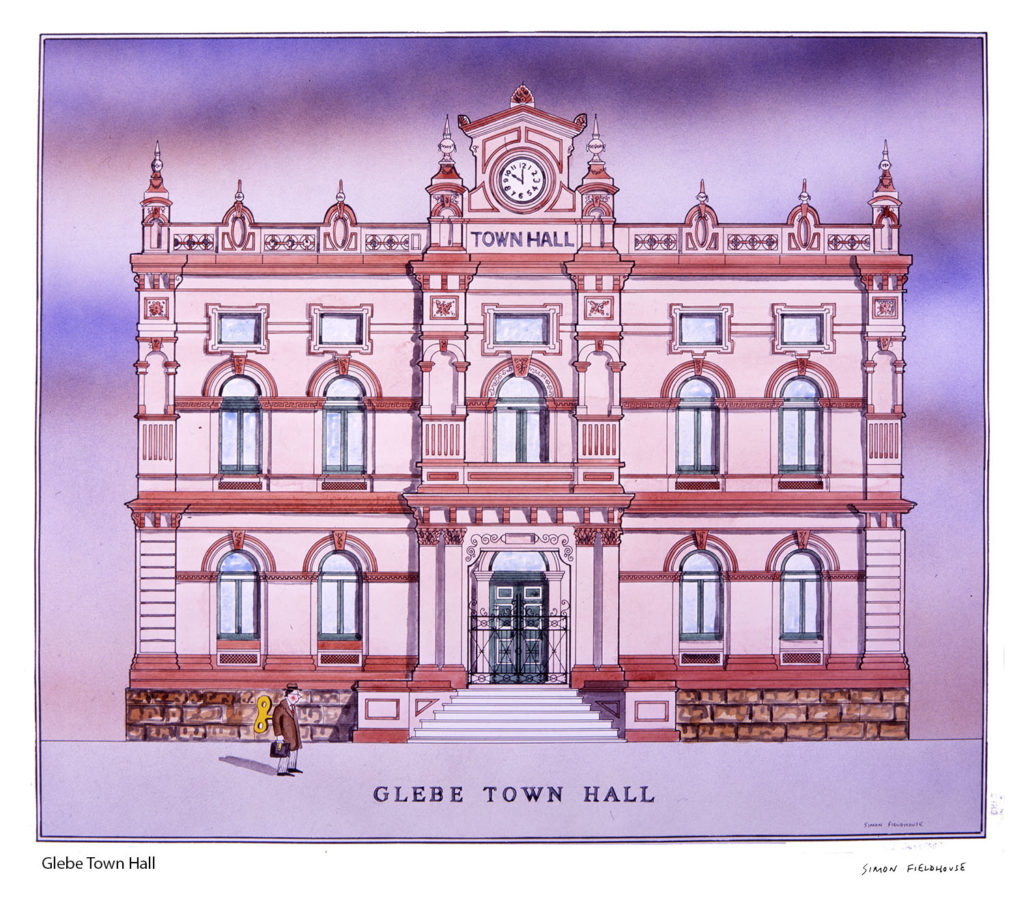
Glebe Town Hall
Glebe Town Hall was built in 1880 and is a beautiful example of the Victorian free classical style with its elegant rooms historically playing host to social and civic events from wartime balls and evening concerts to debating clubs and political meetings. Glebe is an inner-western suburb of Sydney. Glebe is located 3 km south-west of the Sydney central business district and is part of the local government area of the City of Sydney, in the Inner West region.
Glebe is surrounded by Blackwattle Bay and Rozelle Bay, inlets of Sydney Harbour, in the north. The suburb of Ultimo lies to the east and the suburbs of Annandale and Forest Lodge lie to the west. The southern boundary is formed by Parramatta Road and Broadway. Broadway is a locality around the road of the same name, which is located on the border of Glebe, Chippendale and Ultimo.
Glebe's name is derived from the fact that the land on which it was developed was a glebe, originally owned by the Anglican Church. 'The Glebe' was a land grant of 400 acres (1.6 km2) given by Governor Arthur Phillipto Reverend Richard Johnson, Chaplain of the First Fleet, in 1790.In the 19th century, Glebe was home to architect, Edmund Blacket, who had migrated from England. Blacket built his family home, Bidura, on Glebe Point Road in 1858,designing it along conventional Victorian Regency lines. He also designed St John's Church, on the corner of Glebe Point Road and St Johns Road. The church was built from 1868 to 1870.
The Rozelle Tram Depot, opened for service on 17 April 1904. The depot served the inner western suburbs tram routes to Leichhardt, Balmain, Birchgrove, Abbotsford, and Lilyfield. During its peak of operations the depot was a major place of employment, employing up to 650 staff and was one of few workplaces of significant size in the Glebe area during its period.The depot ceased operations on 22 November 1958.The suburb of Glebe was home to a first grade football team in the New South Wales Rugby League, now the National Rugby League. The Glebe Dirty Reds were formed in 1908 and played in the first seasons of rugby league in Australia, with home games at Wentworth Park.[6] The foundation club did not win a premiership, and was excluded from the competition in 1930.In the 1970s, feminist activists took over an abandoned terrace house and set up Australia's first women's shelter, the Elsie Refuge.